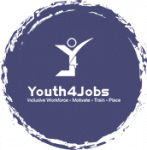
History of the Disability Rights Movement: Perception towards disability has undergone a massive transformation since the 1900s, and it happened largely due to the voices raised by the specially-abled people (1) (2) :
- Examples of activism within specially-abled people can be dated back to the 1800s, however, the entire movement exploded in the 1900s
- Movements by activists for specially-abled individuals, combined with the assistance from leadership over the years, be it by President Truman or President Kennedy, came as a mark of new beginnings for people with disability
- The four-time elected President, Franklin Deland Roosevelt (1882-1945), contracted infantile poliomyelitis at the age of 39. He maintained a regimen of physical therapy, thereby, establishing a precursor to the independent living movement, which later emerged in the 1960s, furthering the idea that independent living for specially-abled people encompassed the quality of life
- The US Congress passed multiple laws over the years to support people with disability, either by enforcing civil rights or even directly. Many sections of the 1973 Rehabilitation Act that specially address discrimination against disability, have proved to be quite important for the disability rights movement
- In 1990, many protestors gathered at the United States Capitol building. As they anxiously waited for the passage of the ADA which had been stalled due to issues from the public transit system who were fighting against the strict accessibility regulations, the protestors tossed around their wheelchairs, crutches and walkers to ascend the Capitol’s steps. This event is infamously known as the Capitol Crawl
- The consistent efforts of activists and leaders alike ultimately resulted in the passing of The American With Disabilities Act (ADA) in 1990
- ADA 1990 and the subsequent ADA Amendment Act in 2008 remain the disability right movement’s greatest achievement till date
Americans with Disabilities Act (ADA): In the 30 years since it has passed, ADA continues to be committed to shaping the modern life for specially-abled people (3) :
- The Act was signed into law by former US President George H.W. Bush on July 26, 1990, under the hot summer sun on the South Lawn of the White House
- The law, which was deemed as the “declaration of equality” by Former President Bush himself, came into being with over 2,000 people cheering from the lawn, many in wheelchairs. It aimed at eradicating discrimination that is faced by millions of people, and necessitating reasonable accommodations on transportations, in schools, and public areas
- Over the years, the entire American community has witnessed modifications in the environment and infrastructure, increase in access to affordable healthcare, and a rise in political participation
- The law not only restricts itself to the rights of those born with a disability, but also expands to those who experience temporary disability, or those who are recovering from illness or alcohol abuse
ADA Amendment Act, 2008: The Act in 2008 came as an amendment to the Americans with Disabilities Act of 1990 and other discrimination laws for disability at the federal level. The Georgetown Law Library elaborates on the amendment (4) :
- While introducing the ADAAA 2008, the US Congress stated that multiple decisions passed by the Supreme Court had interpreted ADA 1990 such that it restricted the rights of specially-abled people. The amendment came as a response with the goal to broaden these rights
- The broadening of the rights included redefining the term “disability”, thereby, increasing the types and number of people protected under the act
- Additionally, it was designed to strike a balance between the interests of both employers and employees, since the earlier feeling was that the act was skewed towards employers
Our Standing in 1990s vs Today: While ADA has since its existence opened up access to buildings, has it touched hearts & been embraced by one and all? Are we focusing on the right priorities to mainstream 12.6% of Americans with Disabilities?
- Overview: According to the US Census Bureau, the total specially-abled civilian noninstitutionalized population in the year 2018 in the United States is 40.6 million or 12.6% (5)
- Another report by Centers for Disease Control and Prevention (CDC) states that there are 61 million US adults that are living with a disability (6)
- One thing, however, that becomes clear while observing either of the aforementioned data is that there is a large chunk of population which needs to be mainstreamed
- Average income as of 2018 is $20,727 per year, which indicates that outcomes like clearly quality of life, opportunity for higher education, employment yet to be achieved
- Prominent Gains: Over the years, ADA and its subsequent Amendment Act has been able to accomplish several achievements:
- The Act is widely known to all and there is acute awareness among one and all about the same
- Once the act came into effect, specially-abled people acquired better access to job opportunities, transportation and public places
- Over time, the public attitude towards specially-abled individuals also improved dramatically
- At the 25th ADA anniversary, the Wharton Management Professor Adam Cobb observed that the quality of work for specially-abled individuals in the US had seen an improvement (8)
- Accessibility: The ADA started the process of building an accessible world by making sure that schools, buildings, and other public spaces were equipped with elevators, ramps, and curb cuts
- Travel was made easier with the operator required to arrange for accommodations, like wheelchair elevators, shuttle service in airports, among others
- However, many colleges are still not wheelchair-available for accessibility
- Even a few railway stations in one of the most advanced US cities, New York, are still not entirely wheelchair-friendly
- Healthcare: As per the data from CDC, specially-abled individuals are more likely to have heart disease, be obese or diabetic, and smoke. However, the report suggests that barriers still exist in healthcare access for working-age adults, few of which include (9):
- 1 in 3 specially-abled individuals (18-44 years) don’t have a usual healthcare provider
- 1 in 3 specially-abled individuals (18-44 years) have an unmet need in healthcare due to cost issues in the past year
- 1 in 4 specially-abled individuals (45-64 years) have not undergone a routine check-up in the past year
- Education: Despite several provisions taken by the US to ensure access of education among Americans with disabilities including the enactment of Individuals with Disabilities Education Act (IDEA) in 1975, the education metrics continue to be poor:
- The 1975 Act, IDEA, aims at making free appropriate public education available to all eligible specially-abled children (aged 3-21) throughout the nation. According to the National Center for Education Statistics (NCES), nearly 33% of students receiving these special education services have specific learning disabilities (10)
- Furthermore, a report from NCES indicates that while the percentage increase in children serving under IDEA from 1990 to 2015 was nearly 39%. However, on close observation, one notices that while there was an estimate 33% increase in the children serving under IDEA in the first 10 years (1990-2000), there was only a meagre 4.1% (11)
- According to the American Community Survey (ACS), nearly 18.7% of specially-abled people (aged 21-64) have attained education less than high school level in 2018 (12)
- Further, the data from ACS suggests that only 15% of specially-abled individuals in the US have attained education of a college degree or higher in the year 2018, which is merely 6.4 million out of the total 40.5 million
- Moreover, 2 out of 3 specially-abled college graduates remained unemployed, indicating that the impact remains low despite inclusive education policies and technology solutions to assist visual, hearing, or any other kind of impairment
- Employment: While Americans with disabilities constitute a significant percentage of the population, the economic hardships continue to be a daunting reality for many:
- The nearly 45% gap between the employment rate of people with disabilities and the general population, which has existed from well before ADA, reflects the inability of the Act in achieving its goal to provide an equal opportunity for all Americans seeking work (13)
- Total people with disabilities employed in 2008 were 2.83% of US population, which is now down in 2018 to 2.79%, thereby, indicating a decline in employment of specially-abled people over 11 years (14)
- Average income from 2008 to 2018 remained more or less same- $20,136 to $20,727- versus the general population who witnessed a 5.8% increase in their average earnings- $34,293 to $36,298 (15)
- Public Spending: According to the National Conference of State Legislatures, the public spending of the US for disability services and the income maintenance program was nearly $625 billion in FY 13 (16):
- Technology: While the ADA came into being keeping things like government resources and buildings in mind, the definition has now broadened with tech coming into the picture:
- Assistive Technology can also help provide powerful tools to children with learning disabilities by offering remedial support in classrooms, hence, enabling independent learning and empowering them to achieve their personal and professional goals (17)
- However, despite the advanced technology and more opportunities for assistive tech solutions, the scope of impact on both education and employment has still been limited so far
There is still immense work that needs to be done. As Justin Dart wrote in the year 1990, “ADA is only the beginning. It is not a solution. Rather, it is an essential foundation on which solutions will be constructed.”
Questions All of Us Should be Asking on 30th anniversary of ADA: Looking at the data on healthcare, accessibility, education, employment, public spending, and the progress of assistive technology, is it time to retrospect on priorities and strategies? Look at Disability sector as “untapped” economic expansion opportunity because of assistive devices, enabling them to be functional?
- Is it acceptable that despite of 625 BN$ spending by Govt in FY 2013, average income ($20K), education and employment levels remain at such low levels?
- Only 15% of disabled people can get college or higher degree even in 2018?
- 67% of college graduates, if disabled, are unemployed even in 2018 when the economy was very good?
- Is it time to look at Empowering, educating Specially Abled People to provide dignity, reduce welfare costs and even collect taxes from their income?
- Is it time for society, Culture for better acceptance of disabled people, ACCESS to hearts now that we have built ramps, provided access to majority buildings?
- Is it time to improve the accessibility of Universities, provide other support to increase education level among Specially Abled People?
- Should our policymakers think of tax incentives to promote employment of Persons with Disabilities?
- Should we re-allocate financial resources for Empowerment model i.e. skilling, self-employment, education, assistive devices to manage and overcome physical limitations?
VOSAP Plan of Action: VOSAP is committed towards a social transformation that provides “ACCESS” to people’s hearts, beyond accessible infrastructure to accelerate achieving ADA goals with its unique “Empowerment” centric model, technology-driven scalable advocacy for rights of Specially Abled People
- VOSAP is changing the narrative on disability and shifting the focus from disability to the ability of people instead, by organizing workshops, creating content, research and engaging voluntary activities such as “VOSAP Art from Heart”, “VOSAP Essay competition” etc. with DISABILITY as the theme
- With its mobile application, VOSAP is empowering everyone to map in-accessible places across the United States to create a crowd-sourced demand generation
- VOSAP offers its proprietary DII (Disability Inclusion Index) framework to corporations to help them achieve D&I goals, find niche market opportunities with better understanding of disability sector and improved DII score
- VOSAP is sensitizing the youth in the universities with VOSAP Collegiate initiative, inspiring them to learn career opportunities, innovate, conduct research in the Disability sector and become a changemaker, compassionate leader of tomorrow
- VOSAP is working with ecosystem partners for making assistive devices accessible and affordable to enable and empower the specially-abled people













